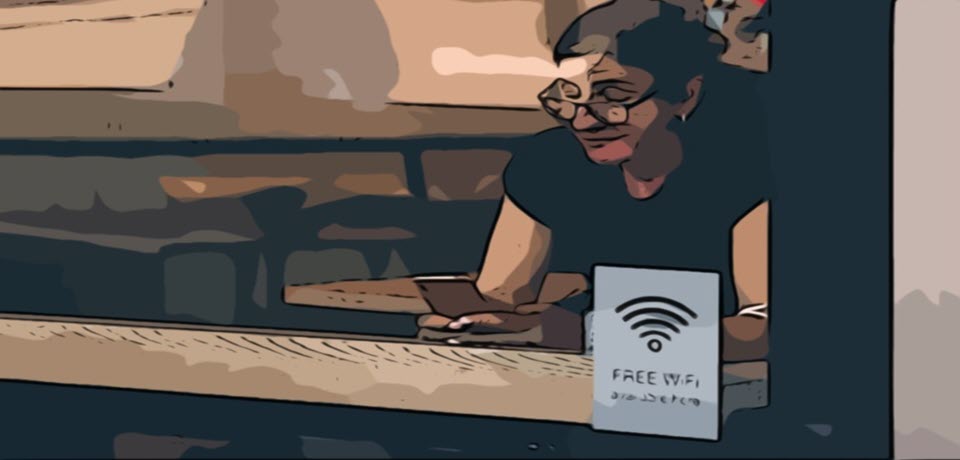- The Wi-Fi is the unsung hero that powers our Instagram obsessions, our Netflix binges, and our midnight forays into the depths of Wikipedia.
- But watch out, dear friend! Not all Wi-Fi networks are heroes. Some of them are wolves in sheep’s clothing, eyeing your unsuspecting device with a malicious glint in their data packets.
- Fear not, for we are here to equip you with the knowledge you need to navigate these treacherous digital seas safely. Buckle up, it’s about to get informational.
Did You Know? Did you know that the term ‘Wi-Fi’ doesn’t actually stand for anything? It’s not an abbreviation, but a brand name coined by a marketing firm.
Deciphering Wi-Fi Security: Spot the Good from the Bad Networks
Contents
1. Understanding Wi-Fi Network Security
2. Signs that a Wi-Fi Network might be Unsafe
3. Best Practices for Connecting to Public Wi-Fi Networks
4. What to Do if You’ve Connected to an Unsafe Network
5. Safety in a Risky Landscape
Understanding Wi-Fi Network Security

Simply put, WiFi network security revolves around smart protocols that act as gatekeepers for your data as it ziplines from your device to the router. Think of them as digital ninjas, if you will.
Over the years, we’ve seen a parade of these ninjas, starting with WEP, the granddaddy of them all. Let’s be frank, WEP was about as effective as a chocolate teapot when it came to security. Then came WPA, a slightly less chocolatey teapot, but still not quite there. WPA2 was the hero we needed, standing tall and strong, guarding our networks for a good long while.
But, wait! The newest kid on the block, WPA3, is here now, promising to be the Superman of Wi-Fi security. It’s like WPA2 but with added spinach. However, not all devices support this latest protocol just yet, so bear that in mind.
Up next, we’ll dive deeper into how you can tell a superhero Wi-Fi from a villainous one. Spoiler alert: It involves less action than a Marvel movie but is crucial to keeping your digital life intact.
Signs that a Wi-Fi Network might be Unsafe

Navigating the landscape of Wi-Fi networks can feel like stepping into a bustling city for the first time. Some neighborhoods are perfectly safe, others are riddled with potential dangers. Here are a few signs that could indicate a Wi-Fi network might be unsafe, using real-world examples for clarity:
1. Open Wi-Fi Networks: Picture this, you’re at the airport, tapping your foot, waiting for your flight. Suddenly, a Wi-Fi network called “Airport_Free_WiFi” winks at you. Tempting, right? But remember, open networks are like houses with doors flung wide open — anyone could stroll in, snoop around your data, and maybe even swipe a few digital keepsakes. Be brave, resist the siren call of free Wi-Fi!
2. Unfamiliar Networks: Let’s say you’re in a hotel, and you’re given the official Wi-Fi network name at check-in. You’re all set to jump into your cozy bed and binge-watch your favorite show. But, you notice other networks popping up. They might have strong signals that whisper promises of speed and convenience. But stop right there! This is like hitching a ride with a stranger just because their car has plush seats. Sure, it might be smooth sailing, or it could be a one-way ticket to Trouble Town.
3. Networks with Suspicious Names: Imagine you’re at your favorite café, ‘CoffeeTalk’, ready to sip a latte and and soak up some Internet. Usually, you connect to “CoffeeTalk_Guest”. But, what’s this? A new network called “CoffeeTalk_Free_WiFi”? This is a classic case of an ‘evil twin’ – a cyber crook’s sneaky way of fooling you into handing over your precious data. Always double-check you’re connecting to the right network. When in doubt, ask the barista.
4. Networks Asking for Personal Info: Have you ever met a WiFi that’s too interested in your life? If a Wi-Fi network prompts you to provide personal details or to create an account before connecting, proceed with caution. In a hotel, for example, this might be part of the standard procedure. However, if you’re in a public place and a free Wi-Fi network is asking for such information, it could be a ploy to collect personal data for nefarious purposes.
5. Slow Connection Speeds: Finally, if your fast and furious browsing turns into a slow slog, tread carefully. While it might just be a network having a rough day (don’t we all?), it could also be a ‘man-in-the-middle’ attack. Like an unwanted party guest, this cybercriminal has crashed your connection and could be meddling with your messages.
It’s essential to approach all Wi-Fi networks with a healthy level of skepticism and caution. If something doesn’t feel right, it’s safer not to connect. Trust your instincts and remember: not all Wi-Fi networks are what they seem.
Best Practices for Connecting to Public Wi-Fi Networks

While picking a safe Wi-Fi network is crucial, your digital habits are just as important. You wouldn’t leave your car unlocked in the safest neighborhood, would you? Here’s how you can button up your online life:
1. Use VPNs (Virtual Private Networks): Think of a VPN like a private secret tunnel for your data, away from the bustling data highways of the Internet. It’s like your personal Harry Potter-style invisibility cloak for your data. A VPN encrypts your data, obscuring it from potential onlookers and making it significantly harder for anyone else to access. This is particularly important when you’re on public networks, but it’s also handy even at home, where your neighbor’s prying cat (or the neighbor themselves) can’t peek at your online activities.
2. Keep your Device’s Software up to date: Just like your car needs its oil changed and tires rotated, your devices need their software updated regularly. These updates often carry crucial security patches to fend off the latest threats in the cyber world. As the landscape of cyber threats constantly changes, these updates help your devices keep pace.
3. Turn off File Sharing: If you leave file sharing turned on, it’s like leaving your home windows wide open with a neon ‘Come On In’ sign. File sharing can expose your data to other users on the same network. So, before you connect to a public Wi-Fi, double-check to ensure you’ve turned this feature off. It’s a simple move but creates an effective barrier against unwelcome digital intruders.
4. Avoid Sensitive Transactions: Would you discuss your deepest secrets in a crowded bus? Probably not. Similarly, it’s best to avoid conducting sensitive operations like online banking on public Wi-Fi. Save these activities for when you’re connected to a secure, private network.
5. Use HTTPS for web browsing: Ever noticed that some URLs start with ‘https’? The ‘s’ in https stands for ‘secure’, and it means that all the data traveling between your browser and the website you’re visiting is encrypted. It’s like having a private, soundproof room in a bustling house party, keeping your online activities safe from snooping party crashers.
To wrap it up, a safe Wi-Fi network and sensible online habits go together like mac and cheese. Combine both, and you’ve got a recipe for a secure digital life.
What to Do if You’ve Connected to an Unsafe Network

Even the most buttoned-up, tech-savvy folks can stumble into a digital pothole. So, you accidentally connected to a dubious network? No sweat! Here’s your action plan:
1. Disconnect from the Network: If you find yourself connected to a dodgy network, the first thing you should do is disconnect immediately. It’s akin to inadvertently wandering into a bad part of town – the sooner you leave, the safer you’ll be.
2. Change your passwords: As soon as you’re disconnected, it’s time to change your passwords. Start with your email account – it’s like the master key to all your online accounts. Then proceed to update your passwords for financial accounts such as banks or trading platforms. It’s similar to changing your door locks after a suspicious person has tried to get into your house. By doing this, you’re making sure that even if someone snagged your data on the unsafe network, they can’t gain any further access.
3. Check your device for malware: Now, bring in the digital sniffer dogs – your trustworthy security tool. Run a scan to check for any malware stowaways that might have hitched a ride while you were on the unsafe network. Think of this as calling in a professional to check for any damage or lingering threats after a break-in. You want to be sure any potential risks are identified and dealt with.
So, even if you trip and fall into an unsafe network, don’t panic. With swift action and a dash of humor, you can turn your Wi-Fi misstep into a teachable moment.
Safety in a Risky Landscape
Being digitally safe can feel like a game of Minesweeper. But with a sprinkle of caution and a dash of knowledge, you can dodge those virtual explosions.
So remember, if a network gives you the heebie-jeebies, listen to your gut and stay unplugged. Now go forth, and browse safely, my friends!
Did You Know?
Did you know that the name of a Wi-Fi network, or SSID, can actually be hidden? This makes the network invisible to most users, but it can still be accessed if you know the exact name.
Author: Nik is an experienced author with 14 years in software and tech, holding an IT Engineering degree and a Data Science Master's from Liverpool University. Disclaimer: This website's content is created by humans and refined by AI for better grammar, flow, and clarity.
